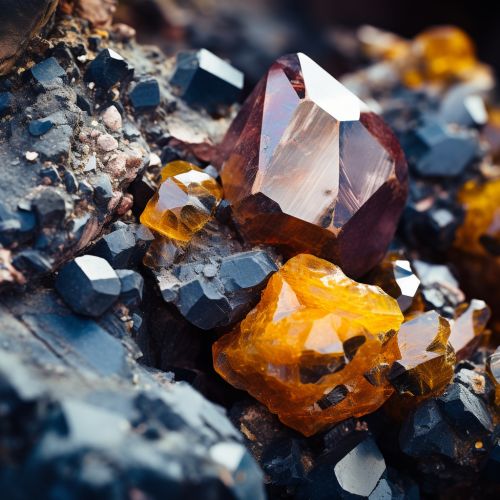The Science of Earths Mineral Resources and Mining
Introduction
The Earth is rich in mineral resources that are vital to our civilization. Understanding the science behind these resources, their formation, extraction, and use is key to sustainable development. This article delves into the science of Earth's mineral resources and mining, providing an in-depth look at the formation of mineral deposits, the methods used to extract them, and the impacts of mining on the environment and society.


Formation of Mineral Deposits
Mineral deposits are formed through various geological processes over millions of years. The formation of these deposits is influenced by factors such as temperature, pressure, and the presence of certain chemicals.
Igneous Processes
Igneous processes involve the cooling and solidification of magma or lava. As these materials cool, minerals crystallize and form deposits. These include valuable minerals such as diamonds, platinum, and copper.
Sedimentary Processes
Sedimentary processes involve the accumulation of mineral particles transported by water, wind, or ice. These particles are deposited in layers and over time, under pressure, they harden into rock. Minerals such as gold, silver, and lead can be found in sedimentary deposits.
Metamorphic Processes
Metamorphic processes involve the transformation of existing rock types into new ones through heat and pressure. This process can lead to the formation of valuable minerals such as ruby, sapphire, and marble.
Mining Methods
Mining is the process of extracting valuable minerals from the Earth. The method used depends on the type of mineral deposit, its location, and the technology available.
Surface Mining
Surface mining is used when mineral deposits are located close to the Earth's surface. This method includes open-pit mining, strip mining, and mountaintop removal.
Underground Mining
Underground mining is used when mineral deposits are located deep beneath the Earth's surface. This method includes shaft mining, drift mining, and slope mining.
Placer Mining
Placer mining is used to extract minerals from alluvial deposits. These deposits are formed by the action of water and wind, which separate heavy minerals from lighter ones.
Environmental and Social Impacts of Mining
Mining has significant environmental and social impacts. It can lead to deforestation, loss of biodiversity, soil erosion, and contamination of water resources. Mining also has social impacts, including displacement of communities, labor exploitation, and health risks for miners.
Conclusion
Understanding the science of Earth's mineral resources and mining is crucial for sustainable development. While mining provides valuable resources, it also has significant environmental and social impacts. Therefore, it is essential to develop and implement sustainable mining practices.
